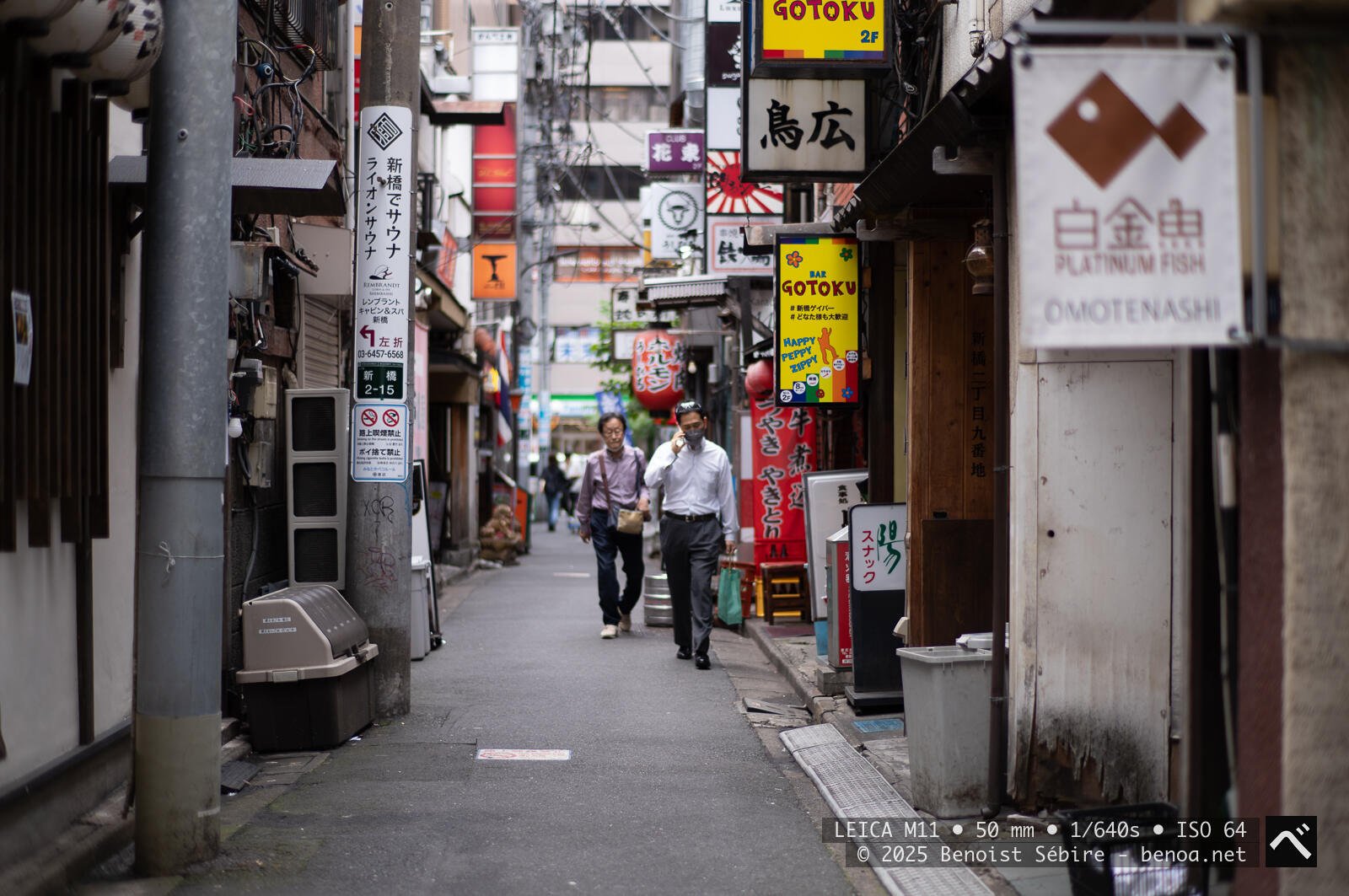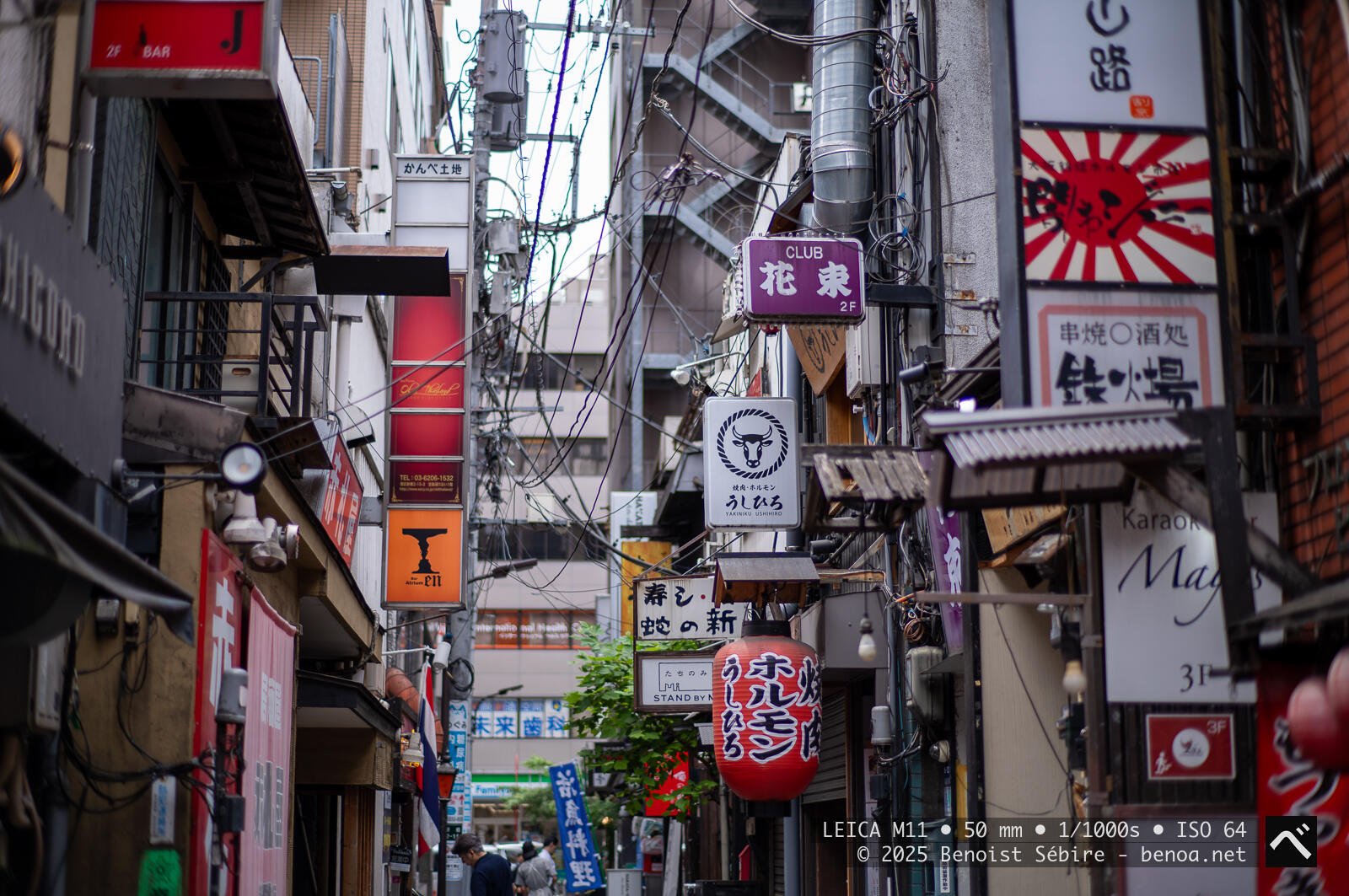Back Alleys

If you ever find yourself near one of Japan’s major railway stations — be it the humming metropolis of Tokyo, the cultural maze of Osaka, or even smaller, off-the-tourist-map towns — do yourself a favor: skip the main streets for a moment and slip into the nearest narrow alleyway that looks like it belongs in a cyberpunk film or a Studio Ghibli sketchbook.

These back alleys, known as yokocho (横丁), are Japan’s hidden veins of life, packed shoulder to shoulder with tiny ramen joints, smoky yakitori stalls, impossibly small bars, and glowing neon signs buzzing gently overhead. The air is rich with the scent of grilled skewers, sizzling gyoza, cheap beer, and the faint hint of cigarette smoke. The lantern-lit corridors barely seem wide enough to fit a person and a sense of adventure at the same time — yet they brim with locals, travelers, salarymen unwinding after work, and curious night owls.
It’s a world that feels untouched by the modern, hyper-efficient surface of Japanese cities. You’ll stumble upon bars so small they only seat four, plastered wall-to-wall with faded movie posters, baseball memorabilia, or quirky trinkets collected over decades. There’s a ramen counter where the chef works in silence, focused like a surgeon, and an elderly couple pouring sake in a place barely larger than your hotel bathroom. Every crooked sign, every flickering bulb, every cramped corner oozes charm — and photogenic chaos.
But here’s the bittersweet reality: these pockets of old Japan are disappearing. Urban redevelopment, stricter fire codes, and the understandable need for safer, earthquake-resistant structures are slowly replacing these charming alleyways with modern, clean-lined, perfectly engineered buildings. Functionally, they’re an improvement — safer, more accessible, energy-efficient. But aesthetically? They often feel sterile. Aseptic. Like someone scrubbed away the quirks and eccentricities, leaving behind polished concrete and predictable lighting.
In places like Tokyo’s Shibuya Nonbei Yokocho or Shinjuku’s Golden Gai, the battle between preservation and progress plays out daily. Some alleys cling to life, now half local haunt, half tourist attraction. Others are already flattened, replaced by shiny developments that tick every box for safety but none for character.
So, if you’re planning a trip to Japan, wander beyond the neon-lit intersections and dive into these disappearing alleyways. Bring your appetite, your curiosity, and your camera. Capture the glow, the grit, the steam rising from open kitchens, the laughter spilling from tiny doorways — because in a few years, those hidden corners might only exist in photographs and stories whispered over a late-night glass of sake.